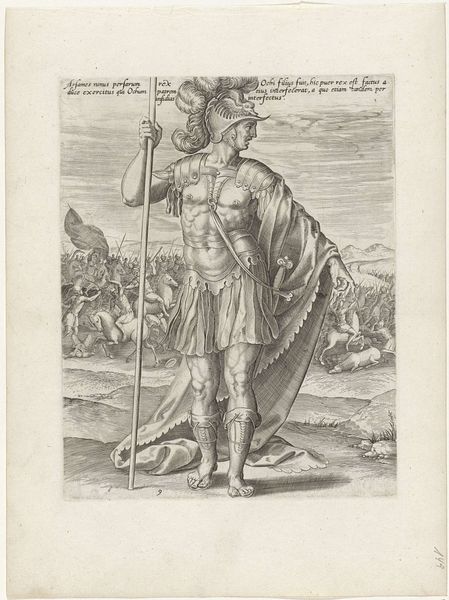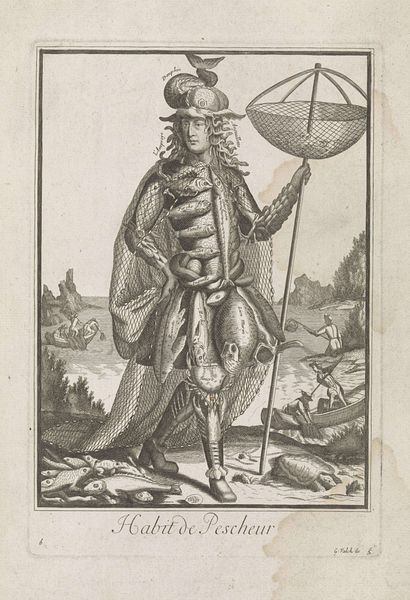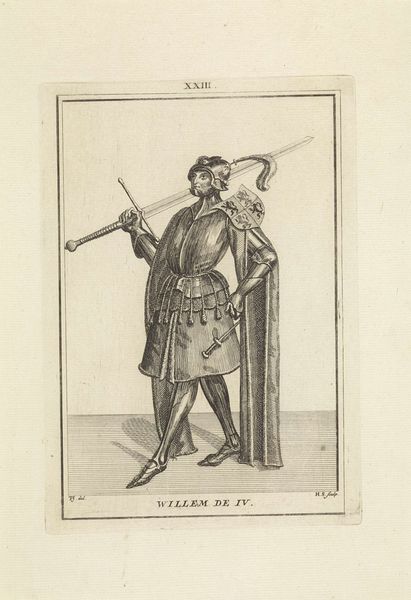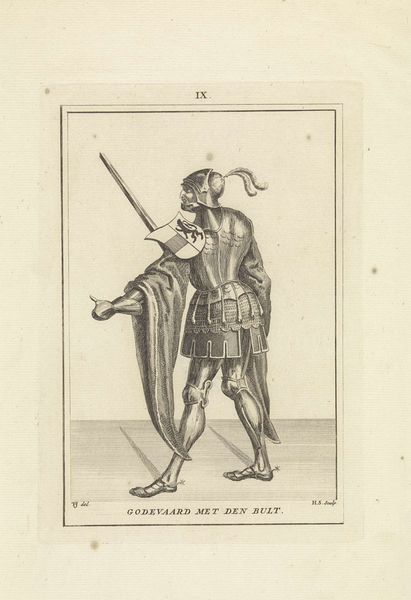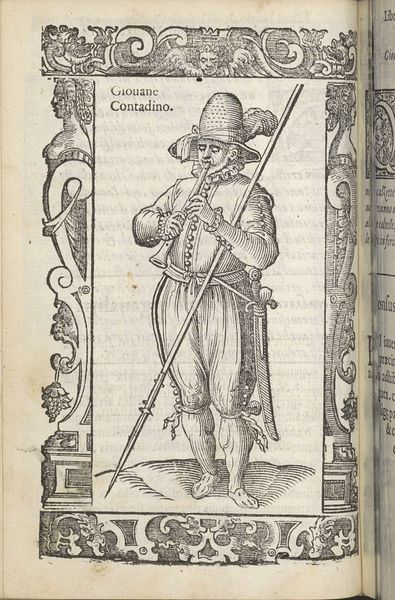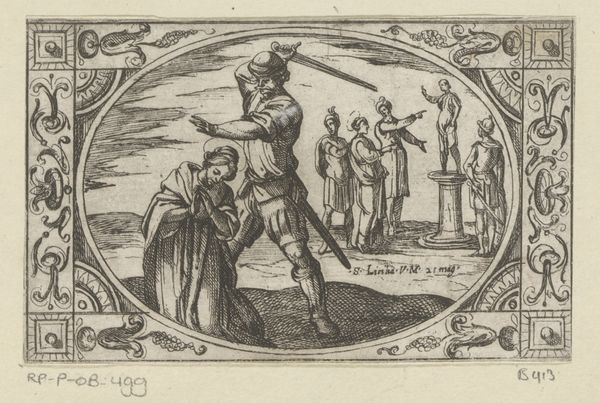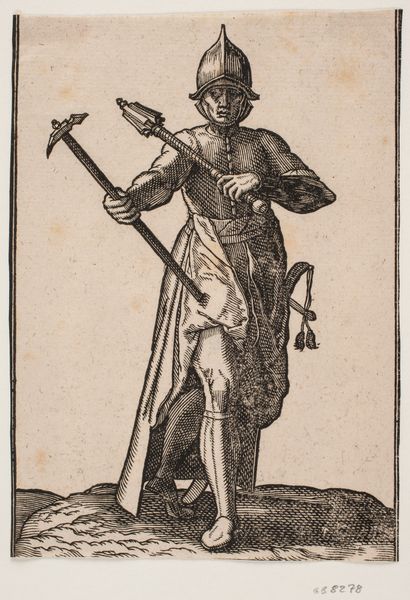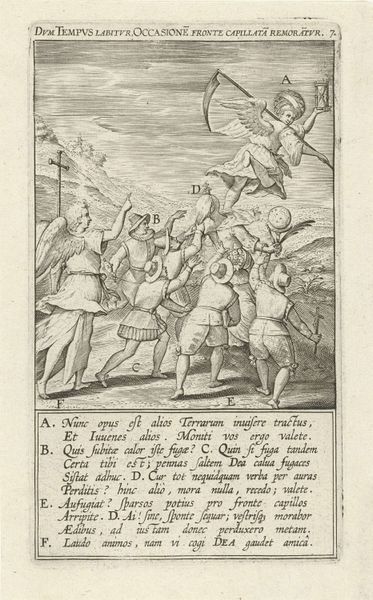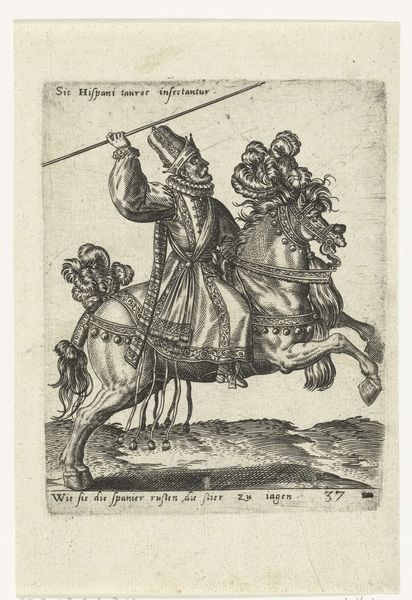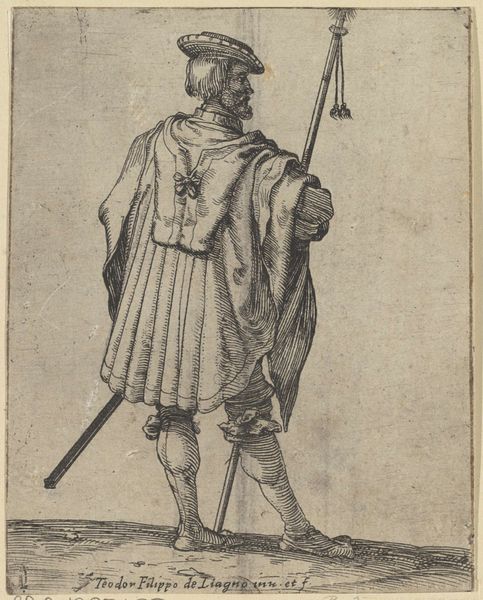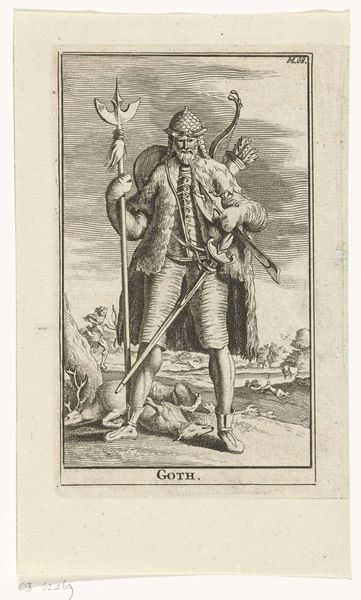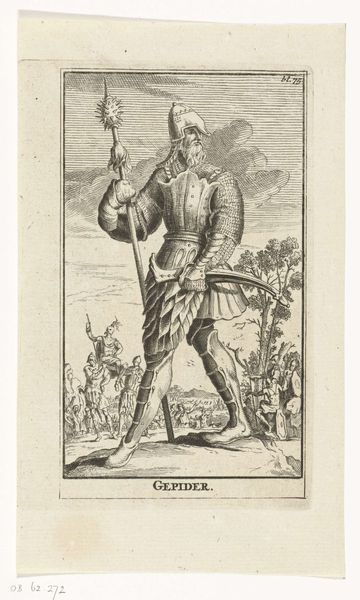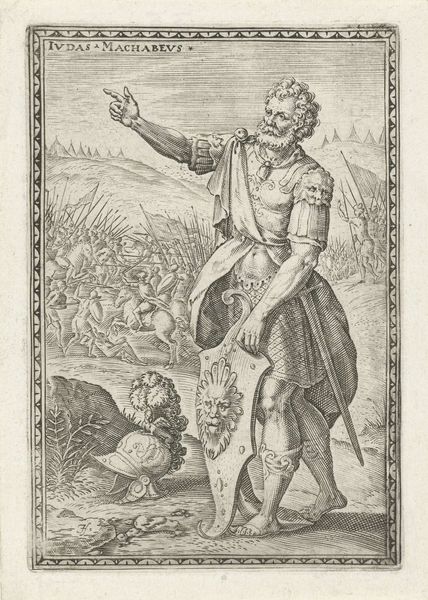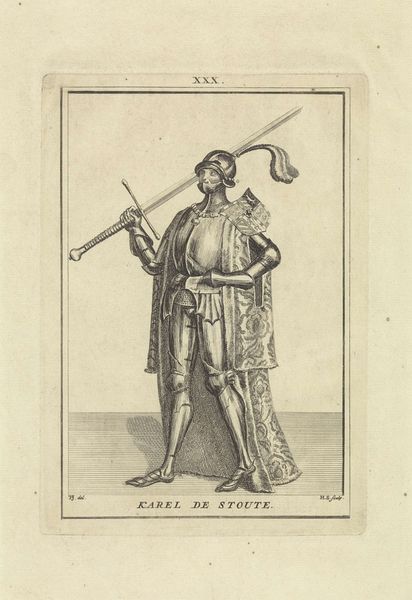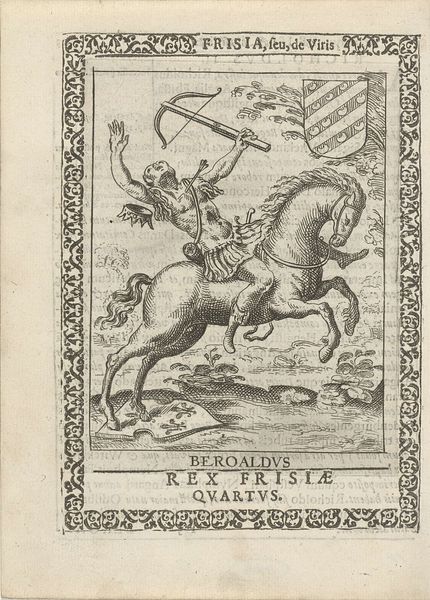
print, engraving
#
dutch-golden-age
# print
#
pen sketch
#
old engraving style
#
figuration
#
line
#
history-painting
#
northern-renaissance
#
engraving
Dimensions: height 125 mm, width 100 mm, height 158 mm, width 115 mm
Copyright: Rijks Museum: Open Domain
Curator: This is a piece by Pieter Feddes van Harlingen, titled “Richold II, derde koning der Friezen,” created between 1618 and 1620. It’s currently housed here at the Rijksmuseum. Editor: Immediately striking, isn't it? The graphic quality produced by the stark lines and limited tonal range of the engraving really commands your attention. A solitary figure, poised with a crossbow against a backdrop of ships… stark. Curator: Precisely. The linearity is key here, dictating both form and content within the visual space. The cross-hatching defines the textures, and there is something rigid in the portrayal that reinforces its message. How would you analyze it? Editor: What interests me are the labour implications and social values evident in its crafting. Consider the engraver's process, translating narrative through meticulously incised lines. The print becomes both historical record and propaganda, reflecting then shaping collective memory. The figure and background show what seems to be soldiers carrying loads in the harbor? It’s as much about material conditions as historical event, isn’t it? Curator: Indeed. Structurally, we see a king heroically defending his territory; a clear, centralized composition emphasizing order and authority. Consider also the emblematic heraldry at the upper right, acting as an additional semiotic marker. It is hard to forget what story this portrait is telling about authority. Editor: Beyond symbolic authority, note the tangible resources necessary: metal plates, inks, printing presses and human skill transforming ideas into commodity circulating amongst networks of patronage and power. Curator: Quite right. To summarize, Feddes presents us not merely with an image of a Frisian king, but a complex, historically contextualized representation of power rendered with precision and clarity. Editor: Exactly. The piece invites discussion about the labor inherent in its production as an object representing history. It moves us to understand material existence and how intertwined the values of craft, commerce, and narrative all are.
Comments
No comments
Be the first to comment and join the conversation on the ultimate creative platform.
